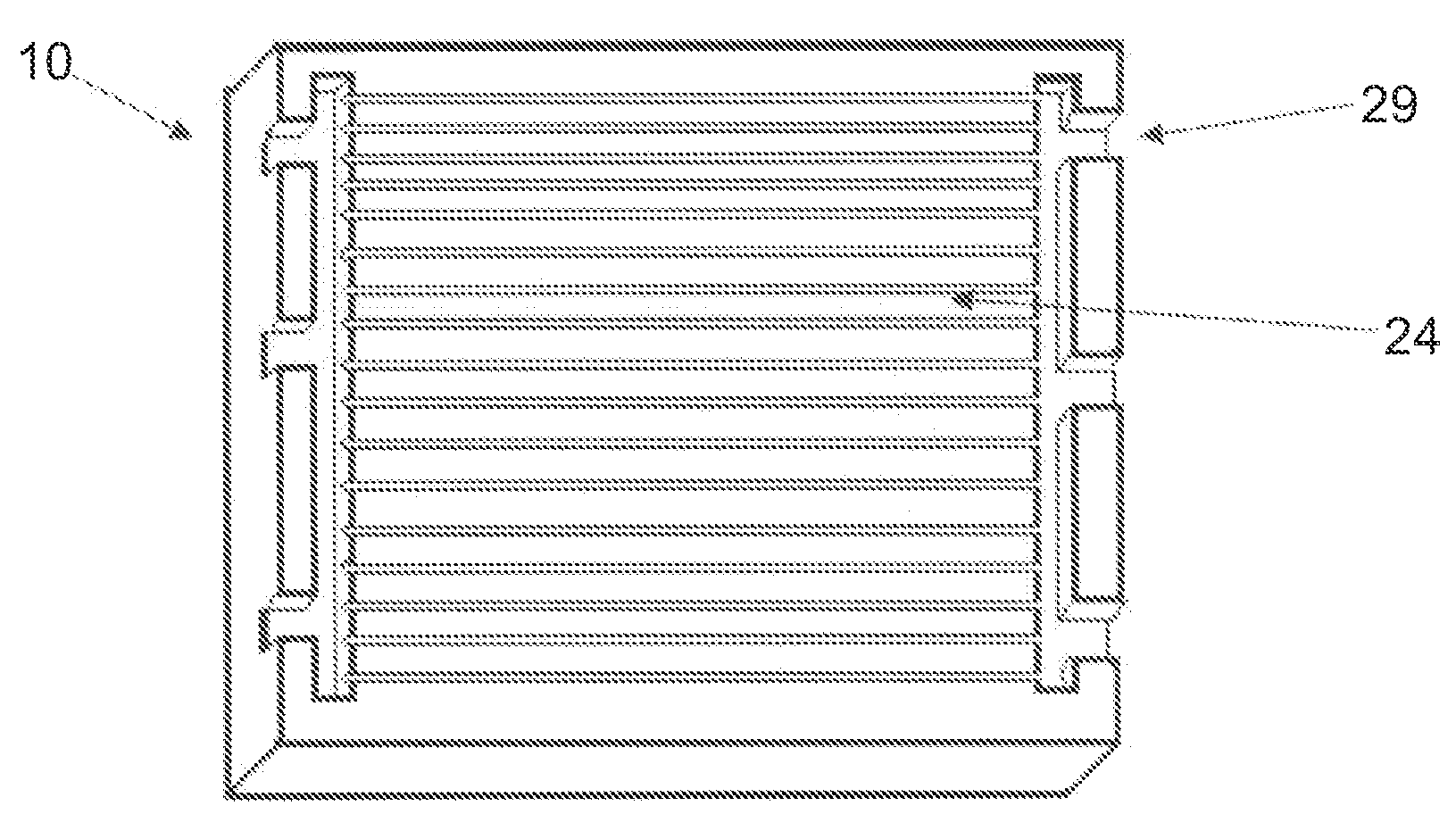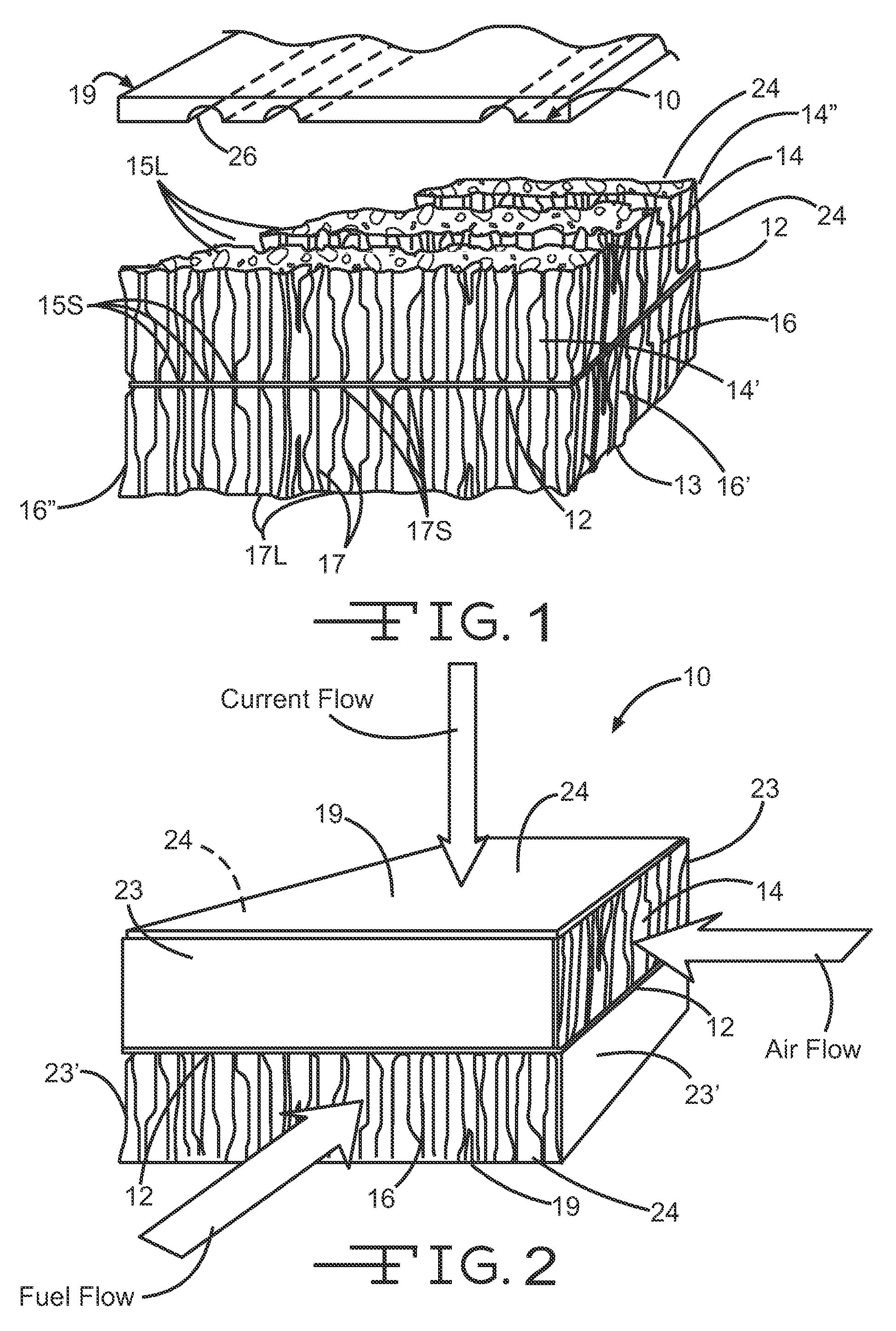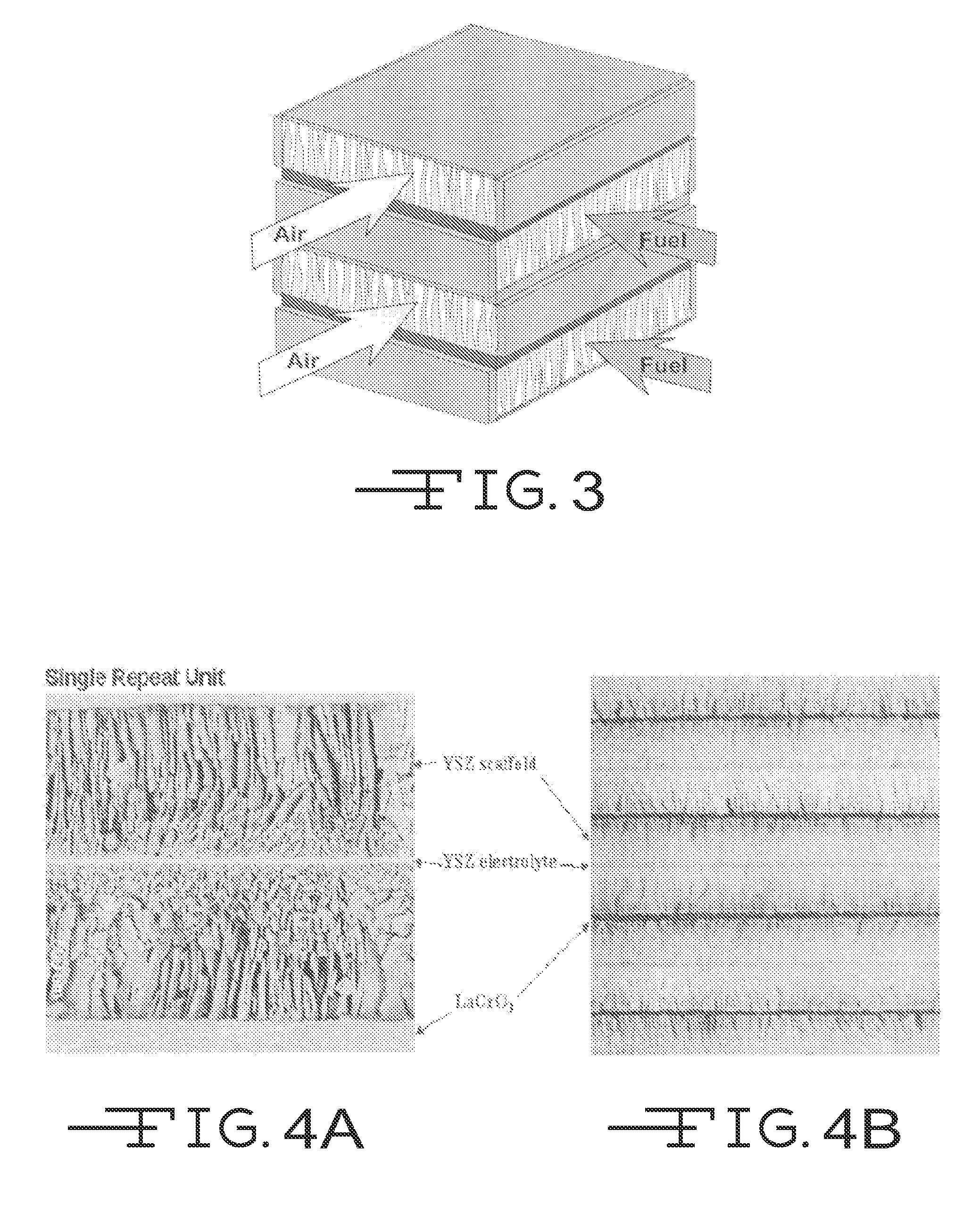Bi-electrode supported solid oxide fuel cells having gas flow plenum channels and methods of making same
a solid oxide fuel cell, bi-electrode technology, applied in the direction of turning machine accessories, final product manufacturing, drawing profiling tools, etc., can solve the problems of affecting the efficiency of the cell, and the inability to meet the requirements of the application. , to achieve the effect of increasing gas flow, increasing thickness, and heat conduction
- Summary
- Abstract
- Description
- Claims
- Application Information
AI Technical Summary
Benefits of technology
Problems solved by technology
Method used
Image
Examples
example i
Fabrication of Symmetrical Bi-Electrode Supported Cell (Bsc) Structures
[0139]One process of making symmetrical bi-electrode supported solid oxide fuel (BSC) cells can include a high temperature sintering step, which is followed by the process steps of converting each of the electrode scaffolds into active electrodes by imparting catalytic activity to them by solution and thermal treatment means which include separate steps for the anode and the cathode.
[0140]In certain embodiments, the following method is used to fabricate a single, monolithic, symmetrical, solid-state, bi-electrode supported fuel cell comprising a cathode, an anode and an intervening region of solid electrolyte where at least the electrode includes gas flow plenum channels on one or more outer surfaces.
[0141]After forming the electrode scaffolds 14, 16, a thin coating 12′ is applied to the outer surfaces 14a, 16b of the electrodes. It is to be noted that the thin coating 12′ becomes the electrolyte 12 after undergo...
example ii
Formation of Anodes and Cathodes from Electrode Scaffolds
[0157]Subsequent to sintering and cooling of the monolithic bi-electrode supported cell (BSC) structure 10, the respective electrode scaffolds 14, 16 are treated by solution and thermal means to impart anodic and cathodic catalytic properties to the respective electrode scaffolds. In certain embodiments, these methods can include the capillary uptake of metal salt solutions or sols that will become metal or metal oxide catalysts for the operation of the anode and cathode in the completed cell, and thermal treatment, as needed, to cause chemical reduction of catalytically active metals or metal compounds.
[0158]The solution treatment involves the blocking of one electrode scaffold while the other is treated. More specifically, each end of one of the respective electrode scaffolds 14, 16 is masked off to plug the flow microchannels and the gas flow plenum channels 24 with a suitable polymer (for example, such as polypropylene car...
example iii
Forming Gas Flow Plenum Channels
[0166]It is to be understood that there are several fabricating methods that are useful to create the gas flow plenum channels 24, most of which involve creating the gas flow plenum channels while the electrodes 14 and / or 16 are soft and in the “green,” or unfired, state.
[0167]It is also to be understood that the gas flow channels 24 can be formed in both the cathode “air” electrode scaffold 14 and the anode “fuel” electrode scaffold 16; and that in certain other embodiments, the gas flow channels 24 can be formed in only one of the cathode “air” electrode scaffold 14 or the anode “fuel” electrode scaffold 16.
[0168]It is to be understood that the pattern and fabricating methods used to form the gas flow plenum channels 24 can vary, based on the cell design, the intended application, and the stack design. For example, in certain embodiments, the bi-electrode fuel cell (BSC) structure 10 can have a cross-flow design, while, in other embodiments, the bi-...
PUM
| Property | Measurement | Unit |
|---|---|---|
| thickness | aaaaa | aaaaa |
| thick | aaaaa | aaaaa |
| temperature | aaaaa | aaaaa |
Abstract
Description
Claims
Application Information
 Login to View More
Login to View More - R&D
- Intellectual Property
- Life Sciences
- Materials
- Tech Scout
- Unparalleled Data Quality
- Higher Quality Content
- 60% Fewer Hallucinations
Browse by: Latest US Patents, China's latest patents, Technical Efficacy Thesaurus, Application Domain, Technology Topic, Popular Technical Reports.
© 2025 PatSnap. All rights reserved.Legal|Privacy policy|Modern Slavery Act Transparency Statement|Sitemap|About US| Contact US: help@patsnap.com



